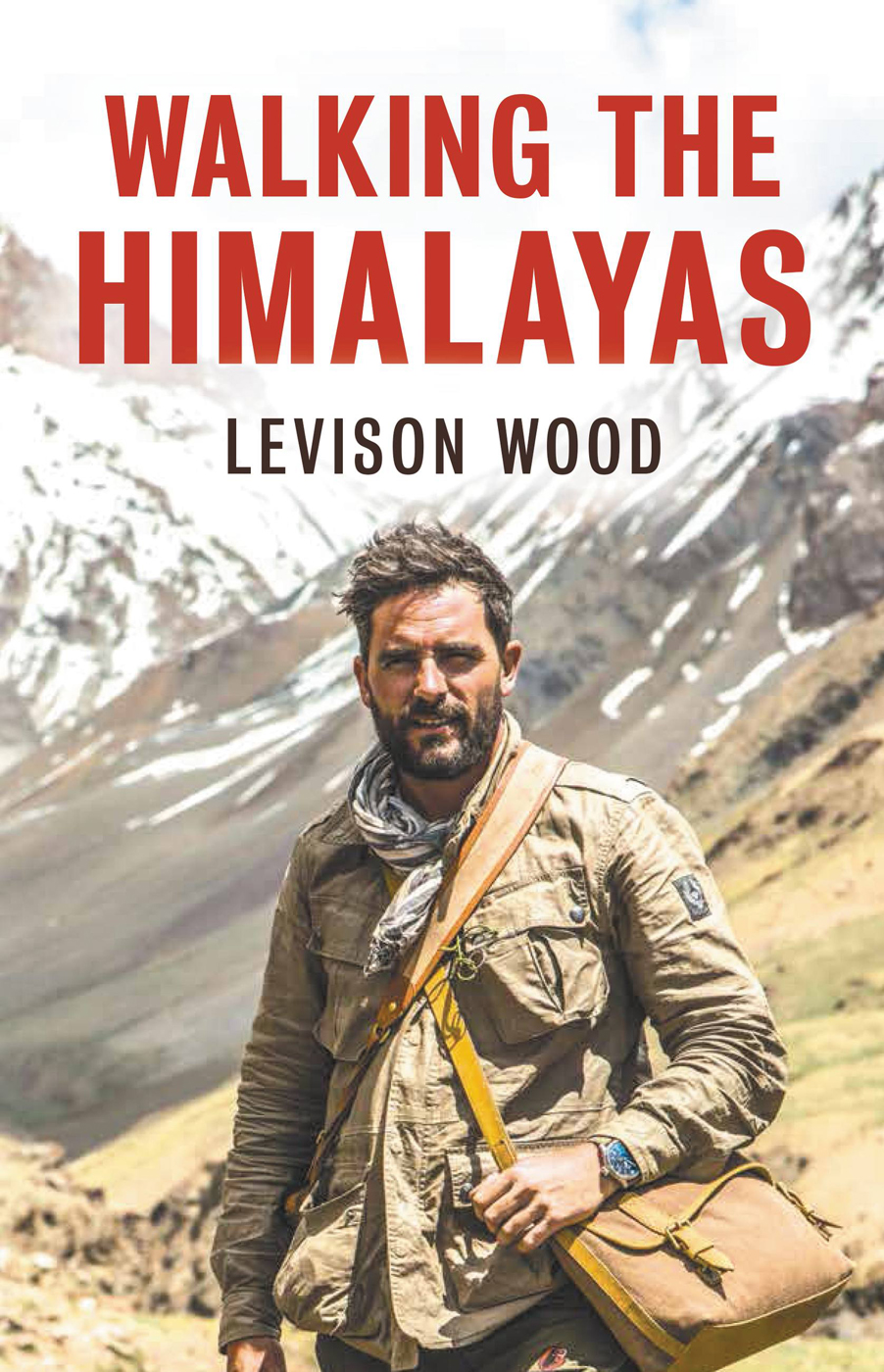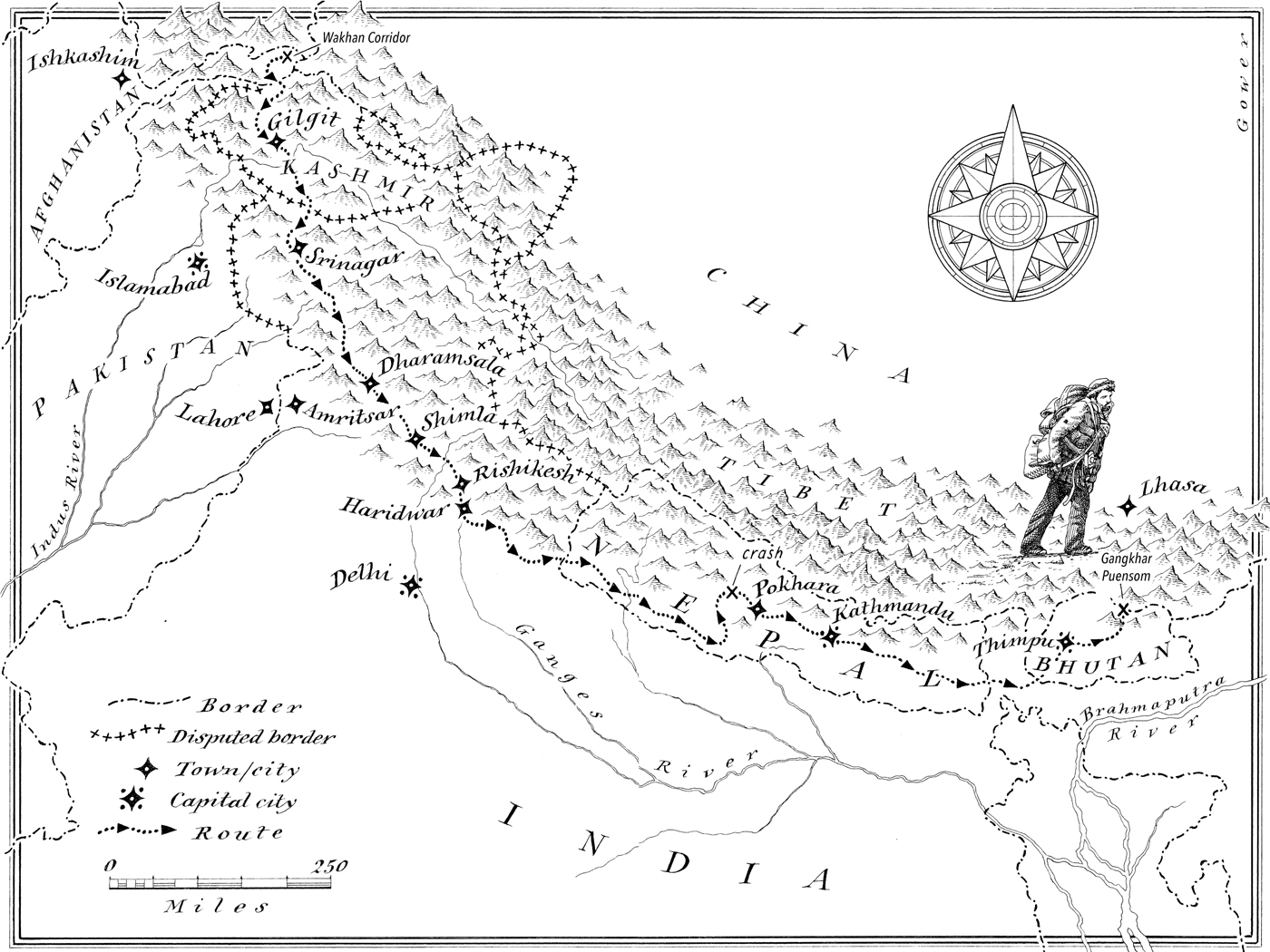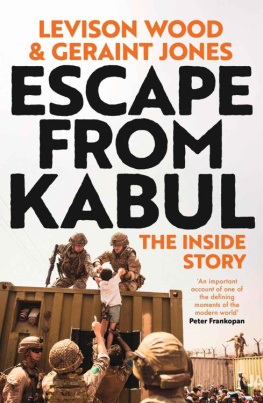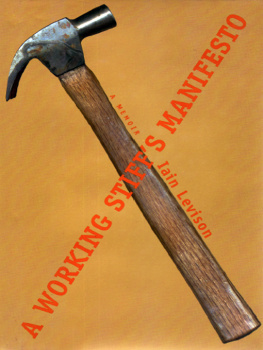Levison Wood - Walking the Himalayas
Here you can read online Levison Wood - Walking the Himalayas full text of the book (entire story) in english for free. Download pdf and epub, get meaning, cover and reviews about this ebook. year: 2016, publisher: Little, Brown and Company, genre: Art. Description of the work, (preface) as well as reviews are available. Best literature library LitArk.com created for fans of good reading and offers a wide selection of genres:
Romance novel
Science fiction
Adventure
Detective
Science
History
Home and family
Prose
Art
Politics
Computer
Non-fiction
Religion
Business
Children
Humor
Choose a favorite category and find really read worthwhile books. Enjoy immersion in the world of imagination, feel the emotions of the characters or learn something new for yourself, make an fascinating discovery.

- Book:Walking the Himalayas
- Author:
- Publisher:Little, Brown and Company
- Genre:
- Year:2016
- Rating:4 / 5
- Favourites:Add to favourites
- Your mark:
- 80
- 1
- 2
- 3
- 4
- 5
Walking the Himalayas: summary, description and annotation
We offer to read an annotation, description, summary or preface (depends on what the author of the book "Walking the Himalayas" wrote himself). If you haven't found the necessary information about the book — write in the comments, we will try to find it.
Walking the Himalayas — read online for free the complete book (whole text) full work
Below is the text of the book, divided by pages. System saving the place of the last page read, allows you to conveniently read the book "Walking the Himalayas" online for free, without having to search again every time where you left off. Put a bookmark, and you can go to the page where you finished reading at any time.
Font size:
Interval:
Bookmark:

In accordance with the U.S. Copyright Act of 1976, the scanning, uploading, and electronic sharing of any part of this book without the permission of the publisher constitute unlawful piracy and theft of the authors intellectual property. If you would like to use material from the book (other than for review purposes), prior written permission must be obtained by contacting the publisher at permissions@hbgusa.com. Thank you for your support of the authors rights.
To receive special offers, bonus content, and news about ourlatest ebooks and apps, sign up for our newsletters.
Sign Up
Or visit us at hachettebookgroup.com/newsletters
Copyright 2016 by Levison Wood
Map 2016 by Neil Gower
Cover design by Neil Alexander Heacox
Cover photograph by Tom McShane
Cover copyright 2016 by Hachette Book Group, Inc.
All rights reserved. In accordance with the U.S. Copyright Act of 1976, the scanning, uploading, and electronic sharing of any part of this book without the permission of the publisher constitute unlawful piracy and theft of the authors intellectual property. If you would like to use material from the book (other than for review purposes), prior written permission must be obtained by contacting the publisher at permissions@hbgusa.com. Thank you for your support of the authors rights.
Little, Brown and Company
Hachette Book Group
1290 Avenue of the Americas, New York, NY 10104
littlebrown.com
twitter.com/littlebrown
facebook.com/littlebrownandcompany
First North American ebook edition, May 2016
Originally published in Great Britain by Hodder & Stoughton, January 2016
Little, Brown and Company is a division of Hachette Book Group, Inc. The Little, Brown name and logo are trademarks of Hachette Book Group, Inc.
The publisher is not responsible for websites (or their content) that are not owned by the publisher.
ISBN 978-0-316-35241-3
E3
Walking the Nile
For my parents

Without warning, a man burst into the internet caf, pulling down the shutters behind him and plunging us into near darkness. He was desperately out of breath and shouting something in Nepali.
As my eyes became accustomed to the dingy light, I made out the anxious face of the skinny white teenager whod been sitting next to me. Clearly just out of school and on his first solo trip abroad, his loneliness all too apparent, he was now trembling. The screens of the twelve ancient computers, the only gateway to the outside world, flashed and the roar of computer fans filled the room. Dust sparkled in the sliver of light that crept in through a high window. Outside it was eerily quiet.
The man forced a smile and walked a little closer to the weather-worn woman who ran the caf. She and her baby were both shrouded in the faded, thinning silk of her sari. All eyes were on him, as he stood there sweating in his white string vest and an old pair of grey suit trousers.
Army, police, they coming now. Shooting, killing. You need to leave, now, go.
I looked across at the boy next to me. He hesitated nervously, wanting to move but paralysed by fear. I got up, but the man gestured in the direction of the door.
Wait. Stop, too late. Not now.
As he spoke, there was the unmistakable rattle of gunfire somewhere in the street outside. It sounded close, but it was impossible to tell, as the din of a hundred shouts grew nearer. I had no idea if it was the police or the army, or just another angry mob.
Riots, whispered the man. Stay here for now, too dangerous outside.
I tiptoed towards the front window and peered through a crack in the shutter. The noise outside was deafening. I couldnt see much in the blinding sunlight, except people shuffling past. Some were running and some waving big red flags.
Who are they? I asked the man, who was busy attempting to reassure the nervous mother. The child remained fast asleep.
Protestors. They no like government. Maoists.
Id heard about the Maoists when I arrived in Nepal just a week earlier. There was already a curfew in the streets after nine oclock in the evening, but most people in Kathmandu seemed to pay lip service to it, particularly in the backpacker enclave of Thamel. I certainly had, walking alone through labyrinthine alleyways back from a boozy tavern in all my teenage irresponsibility. The newspapers were full of warnings about these communist insurgents, but until now theyd been confined to the countryside and mountains. In more recent months, the Maoists had spread to the towns and cities, causing mayhem. The government had cracked down and violence was on the rise, but I was not prepared for thisa full-blown riot outside my shabby hotel. This was turning out to be a rather unusual gap year.
A civil war had been raging in the hills of Nepal for six long years and hundreds of people had been killed. In the months before my visit, dozens of policemen, soldiers and government officials had been hacked to death by angry mobs and many more had been victims of improvised bombs hidden in cars and haybales. Over three hundred Maoist insurgents had also been gunned down. Some had been executed without trial by the security forces in revenge for the chaos. Since 1996, the Maoists, or members of the United Peoples Front of Nepal, had taken up arms in protest at having been excluded from the political process. They launched a peoples war, fighting against the government and monarchy, employing communist guerrilla tactics of torture, assassination, bombing and extortion in an attempt to gain power. By 2001, the insurgents numbered in their thousands and were active in fifty of the seventy-five states of Nepal. At the time though, I was blissfully unaware of the political situation; I was just there to enjoy the Himalayas.

After half an hour, the noise outside died down and the whirring of the fan became apparent again. The man in the string vest ventured to the door and pulled up the shutter, revealing the blinding rays of the midday sun, which poured into the filthy room. With my eyes adjusting, I peered around the door to see the street virtually empty. Across the road, a water buffalo munched away at a soggy cardboard box. All that remained of the riot were a few broken bottles and the tatty remnants of a red banner.
A motorbike spluttered past; the rider cannot have been older than twelve. An even younger boy clung haphazardly to his brothers back and I watched as the pair darted in between the parked cars, swerved around the occasional cyclist and narrowly avoided a bullock cart. Overhead, the wonky electricity poles threatened to crash down at any second, and the spidery tangle of wires dangled menacingly above the heads of passing pedestrians. On the other side of the road, a shopkeeper pulled up his shutters, let loose an enormous throatful of phlegm into the street and dragged a trestle table covered with fruit back onto the pavement, patting it delicately with a feather duster. Pineapples, oranges, mangoes and a giant Indian jackfruit wobbled precariously as he replaced his sign offering fruity lassi, the yoghurt drink found across the subcontinent and favoured by backpackers and hippies on the trail. It reminded me I hadnt eaten anything yet and I was hungry.
Font size:
Interval:
Bookmark:
Similar books «Walking the Himalayas»
Look at similar books to Walking the Himalayas. We have selected literature similar in name and meaning in the hope of providing readers with more options to find new, interesting, not yet read works.
Discussion, reviews of the book Walking the Himalayas and just readers' own opinions. Leave your comments, write what you think about the work, its meaning or the main characters. Specify what exactly you liked and what you didn't like, and why you think so.










